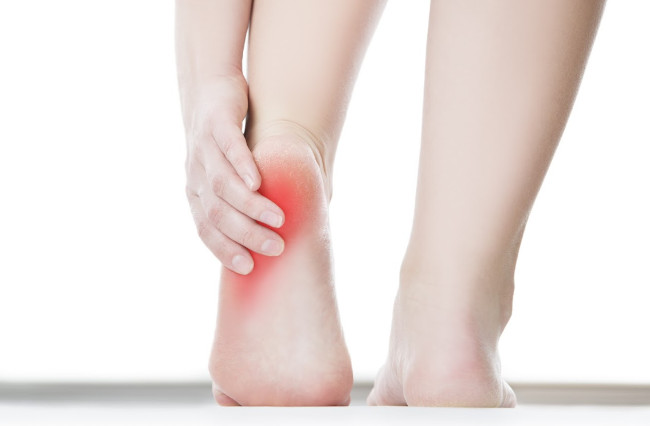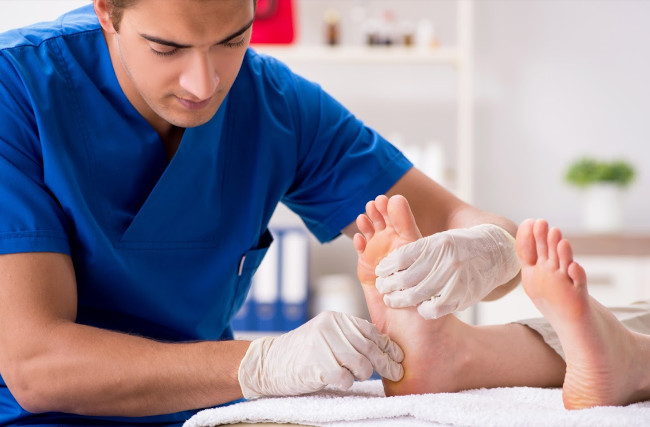
Heel pain is experienced by many people. It could especially be experienced by those between the ages of 40 to 60 years. Various conditions bring about these complaints. Some of these may be arthritis, Achilles tendonitis, heel spurs, sprains, and plantar fasciitis.
The ache usually ranges from mild to severe pain. In worst cases, the distress could lead to disability if not treated. You could self-treat minor cases on your own, using over-the-counter anti-inflammatory drugs or foot massages. However, critical issues may require you to visit a heel pain podiatrist.
Causes Of Heel Pains
There are various types of heel pain, depending the part of the heel that’s aching. Some will affect a particular bracket of people severely. For instance, heel spurs could trouble extreme sportspersons mostly. However, some pains like Achilles tendinitis could be experienced by persons who exercise only once in a long while.
Some of the reasons you may be having heel pain could be:
- Heel Spurs
Heel spurs occur when a ligament is separated from the heel bone. Mostly, it’s when the plantar fasciitis undergoes a stressful ordeal, such as an extreme exercise. Most people who could be victims of heel spurs are joggers, runners, or obese individuals.
To relieve this pain, you could massage your feet with ice for half an hour. You may also take over-the-counter ibuprofen or paracetamol but with the doctor’s directions.
- Plantar Fasciitis
Plantar fasciitis is the ligament that connects the heel to the tip of the foot. A tear or a rip due to stress could cause inflammation and, as a result, cause you significant discomfort. It could be identified by feeling a sharp stab or throb under your feet.
Plantar fasciitis causes severe pain under the feet or at the arch of your foot. You could also experience swelling underneath your feet or feel pain as you arise from a rest.
To remedy this, consider stretches or a foot massage. Visit a spa for a massage or perform this by yourself. This could help prevent the problem from escalating.
- Achilles Tendinitis
Achilles tendinitis is a heel issue that develops due to the Achilles tendon being overused. The Achilles is a ligament that links the calf muscles and the lower leg to your heel bone.
This pain may often be experienced by middle-aged basketball or tennis players who only play once or twice a week. If you’re a runner who recently increased your running time or intensity, you may, as well, experience this kind of heel pain.
To treat this condition, you may require several tests done at the hospital first. The specialist could then recommend anti-inflammatories, injections, or surgery. It’ll depend on how severe the issue is.
Heel Pain Management
Some types of heel pain may be caused by illnesses such as gout or arthritis. Most of these may be preventable. The remedies may be tied to the illness. However, you could treat the most common heel discomforts independently.
Some of the precautionary measures you could implement include:

- Getting A Good Pair Of Shoes
Apart from looking stylish, good shoes contribute a great deal to heel health. It’s advisable to get comfortable shoes for every occasion, depending on your daily activities. The footwear should also be a perfect fit for your feet.
Also, replace worn-out shoes that aren’t flat or poorly constructed. They may be the catalyst for heel pain.
- Exercising Frequently
This strategy may be recommendable, especially to people who are about to engage in extreme sports. Stretch the Achilles tendon and the calf muscles before a workout session. It’ll assist the foot in relaxing the muscles as you train.
While running, ensure frequent warm-ups in between. Your muscles may begin to relax steadily with these simple exercises. In time, you could be ready to run again without straining your heels.
- Using Ice After Intensive Exercise Sessions
After coming from an intensive exercise session, you may experience heel discomfort. To avoid this, you could massage your soles with ice soon after you come out of training.
- Resting
When exercising, pay attention to your body. Pain or strain could indicate a problem. If you feel tired or your muscles start to ache, take a rest. Straining your ligaments or overusing your muscles could cause your heels to ache. An example of heel pain that may be caused by such tension is Achilles tendinitis.
If you can’t do without exercising, there’s an alternative. You could consider low-impact exercises that are highly beneficial yet aren’t likely to cause pain. Such activities include yoga, walks, or tai chi.
Conclusion
Various reasons can cause heel aches. You may have stressed a muscle or tore a ligament. Some common culprits for heel discomfort could be an illness, extreme exercises, or wearing shoes that don’t fit properly.
That being so, there are ways to avoid heel pain. One of these is to ensure you wear a fitting pair of shoes. Also, stretch and warm up frequently and take rests when tired. Lastly, use ice to massage your feet after intensive exercises. In case the pain persists, consider visiting a specialist for help.





